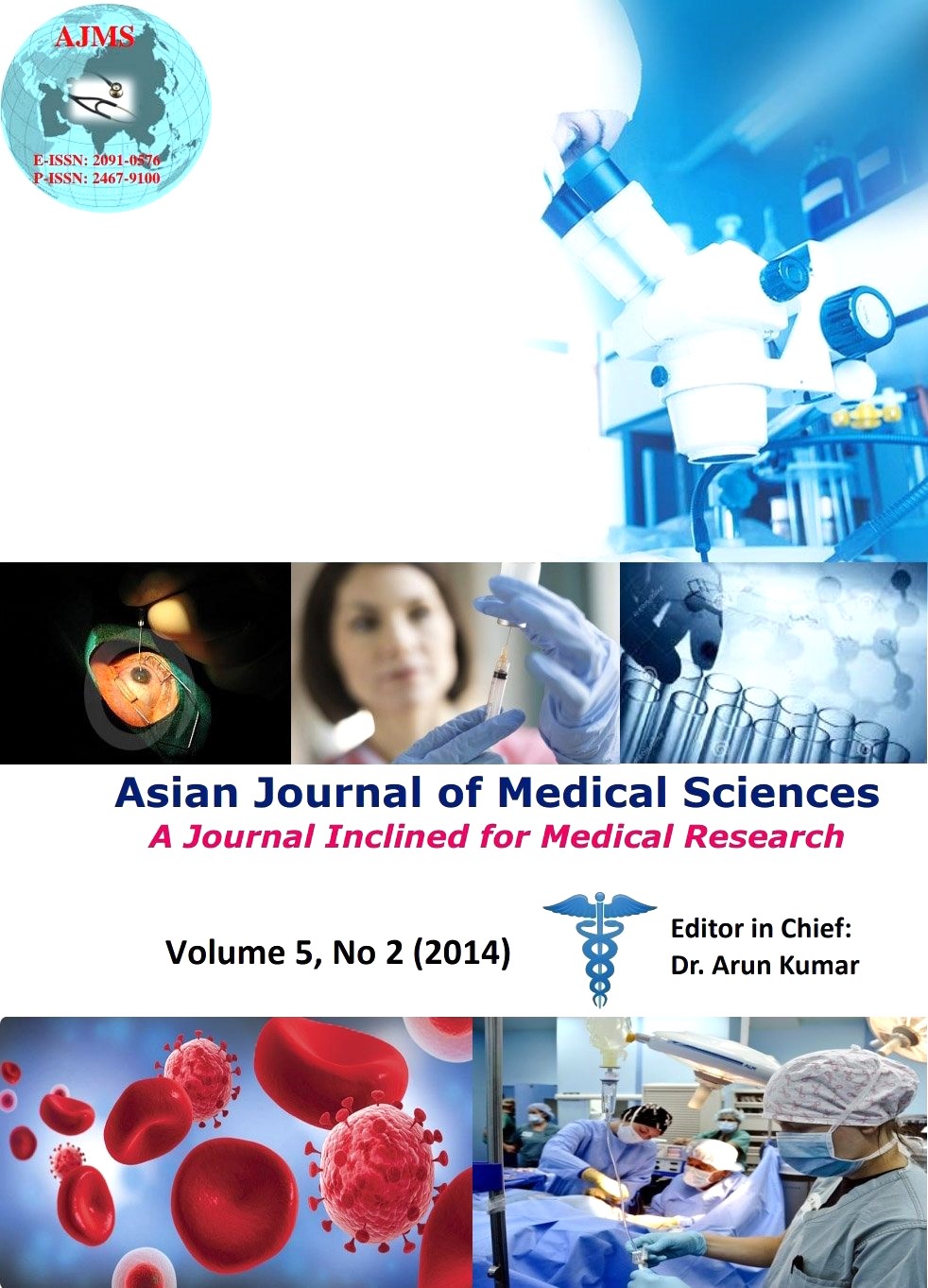Dutta’s Scoring Technique for Early Detection and Management of Uterine Atony during Emergency LSCS – A Randomized Trial
Keywords:
uterine atony, Dutta’s score, PPH, MMRAbstract
Background: Uterine atony accounts for 80 % of causes of PPH and is one of the important cause of maternal death.
Objective: To analyze the efficacy of Dutta’s score for early detection and management of uterine atony during emergency LSCS to prevent PPH.
Study methods: This study was undertaken at JNM, NSGN, CN at Kalyani, Nadia, West Bengal India from 1st January 2007 to 31st December 2011. Three hundred cases undergoing emergency LSCS were selected for randomized trial. Clinical observations were made after placental expulsion for scoring which includes shape and size of uterus, rugosity, tone, placental localization and time of placental expulsion. Score of 0, 1, 2 were given on each observation. Three groups are created depending on scoring-Group A (130) -8 to 10, Group B (N-100) -5 to 7 and Group C (N-70) - <5 for better management. Management protocols were formulated in the three groups for prevention of PPH
Group A:- Oxytocin 10U (5U IM + 5U IV 40drops/min in Ringer Lactate 500ml)
Group B:- Oxytocin 15U (5U IM + 10U IV 40drops/min in Ringer lactate 500 ml) + methyl ergometrine (0.25mg IM) + anterior posterior uterine wall compression
Group C:- Oxytocin 20 U- (5U IM plus 15 U IV 40 drops in Ringer Lactate 500 ml) + methyl ergometrine (0.5mg IM) + carboprost (250 mcg IM) + lateral followed by anterior posterior uterine wall compression + compression of isthmic region of uterus + misoprostol 800mg per rectal during post operative period.
Results: After adopting Dutta’s score and management protocols it was interesting to observe that intra and post operative blood loss within 2hr were found to be significantly reduced in group A-69.3% (<300CC), 84.6%(<200CC) and group B-70%(<300cc), 72%(<200CC). Intra operative blood loss >500cc were also found to be reduce in group A- 7.6%, group B-14%. In group C intra operative blood loss >500cc were seen in 47.1 % and post operative -32.9% cases. Hemoglobin level <11gms after 24 hrs of LSCS was found to be minimally reduced (in comparison to preoperative hemoglobin level) in group A (1.5%), group-B (2%) and group C (11.4%).
Conclusion: Early diagnosis and management of uterine atony during emergency LSCS after adopting Dutta’s score were found to be not only reduce intra and post operative blood loss but also was found to maintain a satisfactory hemoglobin level and hemodynamic status. Maternal mortality was found to be nil. This randomized trial highlighted the importance of prompt treatment in group C to reduce intra and post operative blood loss and maternal morbidity and mortality.
DOI: http://dx.doi.org/10.3126/ajms.v5i2.8531
sian Journal of Medical Science, Volume-5(2) 2014: 40-45
Downloads
Downloads
Published
How to Cite
Issue
Section
License
Authors who publish with this journal agree to the following terms:
- The journal holds copyright and publishes the work under a Creative Commons CC-BY-NC license that permits use, distribution and reprduction in any medium, provided the original work is properly cited and is not used for commercial purposes. The journal should be recognised as the original publisher of this work.
- Authors are able to enter into separate, additional contractual arrangements for the non-exclusive distribution of the journal's published version of the work (e.g., post it to an institutional repository or publish it in a book), with an acknowledgement of its initial publication in this journal.
- Authors are permitted and encouraged to post their work online (e.g., in institutional repositories or on their website) prior to and during the submission process, as it can lead to productive exchanges, as well as earlier and greater citation of published work (See The Effect of Open Access).




